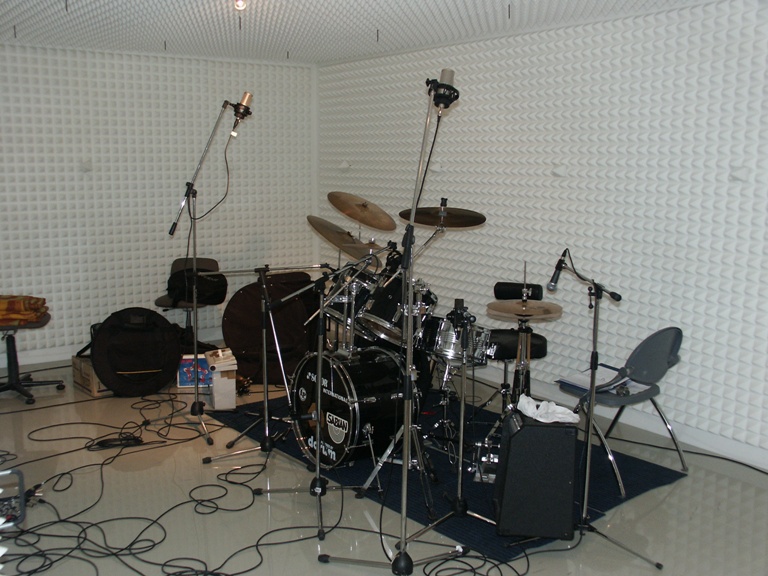You are here
Minor in acoustics and audio technologies
Teaser
The following two links gives an overview of the everyday life in our laboratory in some pictures.
- Video introductory of the specialization
- Project summary for students (prepared for the 70th anniversary of the HIT and TMIT departments, in Hungarian)
Objective
The main objective of the three seminars and one laboratory course of the minor specialization is to convey knowledge in acoustics, sound, vibration, audio and studio techniques to the students enabling them to successfully undertake jobs at companies dealing with acoustical design, vibration isolation, sound recording among various other related fields. Students participating in the minor specialization become acquainted with the basic tools of sound and image techniques, the technologies applied in related systems including analysis and measurement methods, the fundamentals of acoustical design and the methods and devices utilized for integrated sound and video processing in modern studio environments.
Career perspectives
Our former students that successfully finished the minor specialization are working at various companies, including radio and television studios, acoustical, automotive and environmental engineering companies and research institutes.
Compatibility with main specializations
The minor specialization is best fitted to the main specialization Multimedia systems and services for students in electrical engineering, also coordinated by the Department of Networked Systems and Services. However, students of other main specialization are also encouraged to take this minor.
Education program
Specialized courses
Acoustics (VIHIMA19)
Our objective is the discussion of the basics of engineering acoustics, the demonstration of various phenomena occurring in acoustical systems and conveying the fundamental knowledge for practical applications and problems of acoustical design. One of the key topics is electroacoustics, including the discussion of transducers, their analysis and modeling. Beside the physical background and engineering applications of sound production and recording, room acoustics and the propagation of sound and vibration in air and solid bodies are also addressed. Furthermore, some topics of sound and vibration isolation are discussed. Hence, the course provides the basics and sets the scene for the two following two specialized seminars of the next semester.
Topics in short: Basic phenomena of sound and vibration, logarithmic quantities (dB scales and their applications), the wave equation of the sound field and its solutions. One-dimensional models of acoustical and mechanical systems relying on concentrated parameter elements. Acoustical-mechanical-electrical analogies and their applications. Electro-mechanical transducers, the construction, functionality, types and characteristics of loudspeakers and microphones. Propagation, reflection and absorption of sound waves, their calculation and design. Fundamentals of room acoustics. Acoustical properties of rooms, representative qualities and quantities of sound fields. Controlling sound propagation by engineering methods: fields of acoustical design, possibilities and tools.
Audio technologies (VIHIMA20)
The objective of the course is to learn the theoretical and practical knowledge a professional "sound engineer" is expected to have. The topics related to amplification in live performances is emphasized, as this is the field where the general lack of engineering background is prevalent. A key aim of the course is to teach the students already having basic knowledge in electrical engineering to be able to perform audio engineering tasks including amplification in a competent manner by supplementing their knowledge with audio technologies.
Topics in short: Elements of analogue and digital audio technology (microphones, audio-mixers, loudspeakers, effect processors etc.), their system and measurement techniques, questions of sound amplification of live productions; differences of HiFi and PA (Public Addressed) studio systems; special topics in mobile amplification. Further closely related fields to sound engineering: fundamentals of room and building acoustics that have a key role in determining the quality of sound radiation, the sound penetration of walls, and special techniques to achieve the best speech intelligibility even in heavily echoic environments.



Laboratory excercises
Acoustics and audio laboratory (VIHIMB06)
Objective: introducing the practical application of the theoretical knowledge attain in the previous two semesters. The laboratory course includes examinations and measurements carried out under realistic, industrial circumstances.
Topics in short: Examination and measurements of electroacoustical transducers (loudspeakers and microphones). In situ examination of sound absorption and insulation, measurement techniques of room acoustics. Evaluation of environmental noise. Experimental modal analysis. Examination of video compression methods, video editing, methods and tools for video production.
Recommended optional courses
We recommend taking the following supplementary courses.
- Audio-video content production (VIHIAV04)
- Physics of musical instruments (VIHIJV68)
- Audio techniques practice (VIHIJV69)
- Room acoustics (VIHIAV67)
- Simulation methods in acoustics (VIHIAV25)
Project laboratory and thesis projects
Project laboratory and thesis project tasks cover a broad field of sound and audio, engineering acoustics and media technologies. These topics are often related to research and development projects initiated by our Hungarian or international partners. Currently advertised topics are found at the HIT website, while completed works of our students can be browsed here.
Laboratory of Acoustics and Studio Technologies
The research and education profile of the Laboratory of Acoustics and Studio Technologies (LAST) includes engineering acoustics, audio techniques, and studio technologies having great traditions at the Department of Networked Systems and Services. Education at our laboratory is facilitated by a small but well-equipped sound studio, a semi-anechoic measurement chamber, multi-channel vibroacoustic measurement systems, various simulation tools for acoustics, sound, and vibration, and a computer network consisting of 16 Apple multimedia workstations.
The staff of the Laboratory have been participating in various European research projects and domestic infrastructural developments (tram on the Rákóczi bridge, Southern railway bridge, Metro line M4 etc.), and the planning and execution of key cultural investments (including the Liszt Ferenc Academy of Music, MüPa Budapest, Kodály Center Pécs).
Contact person
Péter Rucz, assistant professor
BME Department of Networked Systems and Services (HIT)
Laboratory of Acoustics and Studio Technologies (LAST)
e-mail: rucz@hit.bme.hu
phone: +36-1-463-2543
